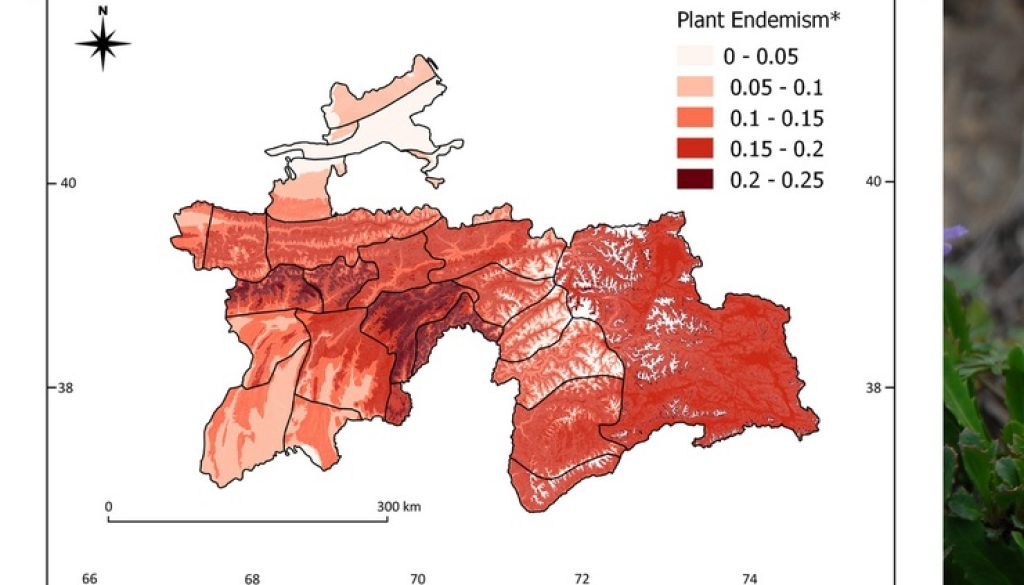In a period of ongoing climate changes, identifying drivers of overall and species diversity is a key element in constructing new ecological patterns and determining the main goals of conservation. Such studies are especially crucial if they concern biodiversity hotspot areas. In an article published in Scientific Reports journal, we explore patterns and drivers of plant endemism in Tajikistan, a country in the global biodiversity hotspot Mountains of Central Asia. To check which climatic factors have the highest impact on this aspect, we used three groups of variables: 1) contemporary climate, 2) glacial climate, and 3) climate stability expressed as the difference between the contemporary and glacial climate. The results show that the glacial climate and its change to date have the greatest influence on contemporary plant endemism patterns in Tajikistan, revealing the evolutionary dependencies between limited-range plants and past climate. The changing temperature and precipitations regimes during the ongoing climate warming may, therefore, increases the threat to geographically isolated cryophilous plants of Tajikistan, while their escape potential to suitable cold habitats is highly topographically limited.

Figure 1. (a) The distribution of the plant endemism (*proportion of endemic plant species to overall plant species richness) in Tajikistan. (b) Parrya schugnana – an endemic plant species with a low degree of threat (category LC, Nowak et al. 2020), which due to climate change may become a threatened species.
Raduła M., Świerszcz S., Nobis M., Nowak S., Nobis A., Nowak A. 2021. Palaeoclimate has a major effect on the diversity of endemic species in the hotspot of mountain biodiversity in Tajikistan. Scientific Reports, 11: 18684 (https://doi.org/10.1038/s41598-021-98027-3)


